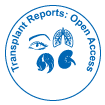The Role of Artificial Intelligence in Organ Matching for Transplantation
Received Date: Aug 01, 2024 / Published Date: Aug 30, 2024
Abstract
The process of organ allocation for transplantation is complex, involving numerous factors such as blood type, human leukocyte antigen (HLA) matching, organ size, waiting time, and geographical distance. Traditional allocation systems often face challenges in efficiently managing this complexity, potentially leading to suboptimal matches and prolonged waiting times. Artificial intelligence (AI) offers promising solutions to optimize organ matching and improve transplant outcomes. This article explores the current applications of AI in organ allocation, focusing on machine learning algorithms, predictive modeling, and decision support systems, while also addressing the associated challenges and future directions.
Citation: Kenji Y (2024) The Role of Artificial Intelligence in Organ Matching for Transplantation Transplant Rep 9: 250. Doi: 10.4172/troa.1000250
Copyright: © 2024 Kenji Y. This is an open-access article distributed under the terms of the Creative Commons Attribution License, which permits unrestricted use, distribution, and reproduction in any medium, provided the original author and source are credited.
Share This Article
Recommended Journals
Open Access Journals
Article Tools
Article Usage
- Total views: 338
- [From(publication date): 0-0 - Apr 04, 2025]
- Breakdown by view type
- HTML page views: 171
- PDF downloads: 167
